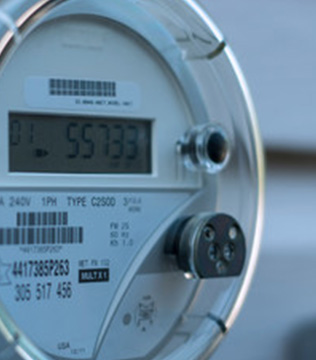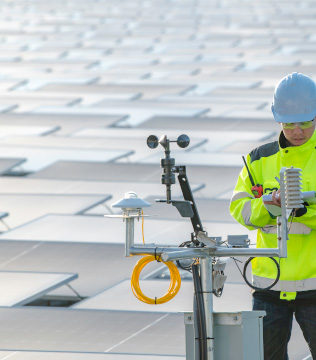Share:
Fixed Wireless Access (FWA)
Fixed Wireless Access (FWA) is revolutionizing the way we connect to the internet, providing high-speed broadband access to homes and businesses in areas where traditional wired infrastructure may be limited or costly to deploy. FWA leverages wireless technology, such as 4G LTE and 5G, to establish a stable and reliable connection without the need for physical cables. This innovative solution not only bridges the digital divide in underserved and rural regions but also offers a flexible and cost-effective alternative for urban areas. —.
One of the key advantages of Fixed Wireless Access is its rapid deployment capability. Unlike traditional wired networks that require extensive infrastructure development, FWA can be set up quickly, reducing the time and cost associated with connectivity expansion. Additionally, FWA is scalable, allowing providers to adjust the network’s capacity to meet growing demands. As we continue to embrace the digital age, Fixed Wireless Access is poised to play a pivotal role in connecting the unconnected and ensuring that everyone, regardless of their location, can enjoy the benefits of high-speed internet access.
Ideal for
Fixed Wireless Access
FWA systems generally comprise a central station linked to a stationary network and multiple subscriber units dispersed across a broad geographical region. The base station utilizes radio waves to establish communication with the subscriber units, enabling companies to connect to the fixed network and gain access to high-speed data services. The transmitters are strategically affixed to immobile structures such as poles, buildings, or towers.
Companies exploring an alternative to fiber optics in challenging environments such as rugged terrain, railway routes, and water crossings.
Companies seeking cost-effective secondary protection for added peace of mind.
Companies in search of a single provider to link all their facilities.
Offering a temporary service line for one-time events or new construction projects while we develop your fiber network.
Key Benefits
Speed to Market
Our FWA solution offers quick and hassle-free installation, enabling rapid network expansion to keep you ahead of the competition.
Reliability
We guarantee dependable network performance with a service level agreement of 99.9%, which can increase to 99.99% when combined with Fiber Transport.
Redundancy
Adaptability
Whether you need temporary lines for special events or new construction in on-net or off-net locations, our solution adapts to your evolving needs while we build your fiber network.
Trusted Partner
Count on us as your trusted provider, offering a comprehensive suite of solutions to address complex connectivity challenges and assist you in building a smarter future.
CONNECT WITH ANSWERS
Frequently Asked Questions
How does FWA technology work?
What are the Benefits and Limitations of Fixed Wireless Access?
There are several benefits and limitations to fixed wireless access, which include:
Benefits:
- Bridging the digital gap in underserved areas. In an era where internet access is increasingly crucial, fixed wireless access provides a solution to deliver high-speed connectivity to those who require it most.
- Can offer high-speed internet to regions lacking traditional infrastructure. Fixed Wireless Access doesn’t rely on physical wired connections beyond the premises, making it a viable choice for residents in areas with mobile coverage.
- Easy Deployment. Unlike other technologies, Fixed Wireless Access (FWA) can be swiftly and conveniently set up without the need for disruptive construction work like trenches. For instance, a customer in Homestead, Florida, simply had a small, pillow-shaped antenna installed on their home, with a wire connecting to their router. The antenna receives a wireless signal from one of the numerous fixed wireless nodes.
Limitations:
- Transmission distance is restricted. FWA connections are limited to places in close proximity to the micro tower due to their requirement on line of sight.
- An emerging technology in a state of ongoing development. While the technology is already impressive, there’s room for enhancement to ensure optimal performance. The fine-tuning process may involve occasional brief outages and connection improvements. Despite these limitations, the State of Broadband: People-Centred Approaches for Universal Broadband Sept 2021 (“State of Broadband Report 2021”) from the ITU/UNESCO Broadband Commission for Sustainable Development notes, “Network performance keeps improving, making FWA increasingly competitive and good enough for various use cases.
What are the distinctions between Fixed Wireless Access and Wired Broadband?
Fixed Wireless Access (FWA) and Wired Broadband are two distinct methods of providing internet connectivity, and they differ in several key ways.
| Fixed Wireless Access (FWA) | Wired Broadband | |
|---|---|---|
| Infrastructure Type | Wireless | Physical Cables |
| Installation and Deployment | Quick and straightforward | Time-consuming and costly |
| Availability | Wider range of locations | Urban and densely populated areas |
| Speed and Capacity | Varies based on factors | Higher potential speeds |
| LOS vs. NLOS (*) | Operates in both scenarios | Requires continuous physical connection |
| Scalability | Relatively easy to expand | Complex and costly expansion |
| Reliability | Varies based on factors | Generally more reliable |
| Cost | Often more cost-effective | More expensive due to infrastructure |
* Line of Sight (LOS) vs. Non-Line of Sight (NLOS)
What is a digital desert?
A “digital desert” is a term used to describe an area or region where there is a significant lack of access to reliable and high-speed internet or digital services. In these areas, residents and businesses often face limited connectivity options, slow internet speeds, or no access to the internet at all.
Featured Cases



Unlock the Power of your Network Today!
Let's Connect to Discuss Your Network Requirements.
